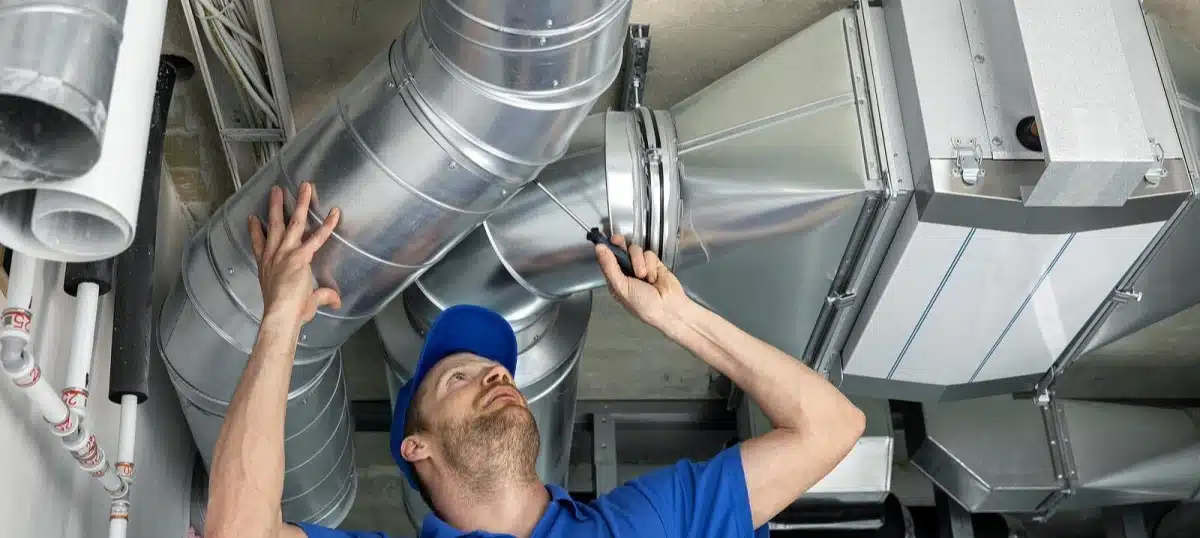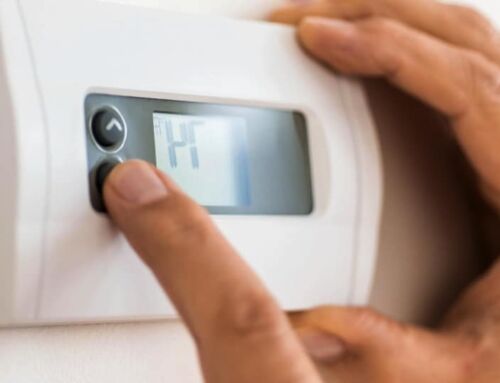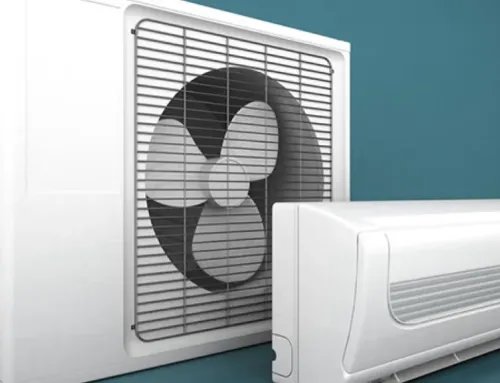When the sweltering Sydney sun turns up the heat, nothing beats the relief of a cool, air-conditioned home.
But not just any air conditioner will do—you need a system tailored for the sprawling spaces and diverse climates of Sydney homes.
Enter ducted air conditioning.
Ducted air conditioning systems are increasingly becoming a staple in Sydney households, and for good reason. They offer a seamless, whole-home solution to climate control, allowing you to enjoy consistent temperatures in every room.
Whether you’re looking to upgrade your existing A/C system or invest in a ducted air conditioner for the first time, we’ll help you level up your knowledge by covering:
- A brief overview of ducted A/C systems
- The mechanics of ducted systems (in simple terms)
- Installation process and regulations to know about
Understanding how these A/C systems work not only helps in making an informed purchasing decision but also optimises the efficiency and longevity of your installation.
Whether you’re building a new home or upgrading your existing setup, knowing the ins and outs of ducted systems will guide you towards making a choice that ensures comfort all year round.
Let’s get right into it.
Ducted Air Conditioning: An Overview
Types of Ducted Systems
Ducted systems come in various configurations to suit different home sizes and layouts. The most common types include:
- Inverter Systems: These are highly efficient, using a variable-speed compressor that adjusts its speed to maintain consistent temperatures with reduced energy consumption.
- Reverse Cycle Systems: Capable of both cooling and heating, these systems are ideal for Sydney’s variable climate, providing comfort year-round.
- Zoned Systems: These allow for different temperature settings in various areas of your home, enhancing comfort and efficiency by heating or cooling only the rooms in use.
RECOMMENDED: What Are the Different Types of Ducted Air Conditioners? 👈
Advantages of Ducted Air Conditioning
Ducted systems offer several advantages that make them a popular choice among Sydney residents:
✓ Consistent Climate Control: They provide a uniform temperature throughout the house, eliminating hot or cold spots.
✓ Aesthetic Appeal: With only the vents visible inside the house, they are far less obtrusive than wall-mounted units.
✓ Noise Reduction: The main components are installed outside or in roof spaces, minimising noise inside the living areas.
✓ Increased Property Value: Homes with ducted systems are often valued higher, appealing more to potential buyers or renters.
Challenges of Ducted Systems
While ducted systems are an excellent choice for many, they come with their own set of challenges:
- Higher Initial Cost: Installation can be expensive due to the extensive ductwork and larger equipment needed.
- Space Requirements: These systems require sufficient space for ducting, which can be a challenge in older or smaller homes without adequate roof or underfloor spaces.
- Maintenance Needs: Regular maintenance is crucial to keep the system running efficiently and to prevent dust and allergens from circulating through the ducts.
Understanding these types, advantages, and potential challenges can help you make informed decisions about whether ducted system is the right choice for your needs.
Whether you’re looking for a sustainable way to beat the heat or a long-term investment in your property’s comfort, ducted systems offer a compelling solution.
The Mechanics of Ducted Air Conditioning Explained
Core Components of a Ducted System
- Central Unit: This is the heart of the ducted system, typically located outside the home or in the attic. It houses the compressor, which is responsible for pumping refrigerant through the system.
- Ducts: These are insulated passageways that transport air from the central unit to various rooms. The ductwork is strategically designed and installed to maximise airflow efficiency.
- Vents: Air enters each room through vents, which are usually situated in ceilings or walls. These can be adjusted to control the direction and flow of air.
- Thermostat: The system’s brain, located centrally or can be controlled remotely, allows homeowners to set and maintain the desired temperature throughout the house.
Operation Process
- Temperature Setting: The homeowner sets a desired temperature on the thermostat.
- Air Handling: The central unit draws in air from the home through return air ducts, cools or heats it (depending on the setting), and then pushes it back into the home through the system of ducts.
- Distribution: The treated air is distributed evenly across the house through a series of outlets in each room. Each room or zone can typically be controlled independently, allowing for personalised temperature settings.
- Recycling the Air: The system continuously recycles the air inside the house, pulling it back through the return air ducts to be reconditioned, ensuring consistent temperature regulation.
Efficiency and Customisation
Modern ducted systems are designed with efficiency in mind. Many feature inverter technology, which allows the compressor to operate at variable speeds, significantly reducing energy consumption and costs.
Zoned systems provide the flexibility to cool or heat different areas of your home as needed, further enhancing energy efficiency and comfort.
Installation and Regulations for Ducted Air Conditioning
Installing a ducted system in Sydney isn’t just about choosing the right model; it involves understanding the local conditions, adhering to specific building regulations, and ensuring you have the necessary permits.
Understanding Sydney’s Weather Patterns
Sydney experiences a temperate climate with hot summers and mild winters. This variability necessitates a versatile air conditioning system like ducted air, which can adapt to rapid weather changes, providing cooling and heating efficiency.
Calculating the Correct Capacity
Choosing the right size for your ducted system is crucial for efficiency. A system that’s too large will use unnecessary power, whereas a system too small won’t effectively manage the climate needs of your home.
Professionals typically calculate the required capacity based on factors like floor size, ceiling height, insulation quality, and window dimensions.
Maximising Efficiency
To make the most of your ducted system, consider the following tips:
- Regular Maintenance: Keep your system efficient with periodic checks and cleans.
- Smart Thermostats: Upgrade to a smart thermostat for better temperature management and energy savings.
- Insulation: Improve your home’s insulation to keep the cool air in during summer and warm air in during winter.
Wrapping It Up: Key Ducted Air Conditioning Takeaways
- System Types and Benefits: Ducted system offers consistent temperature control and aesthetic discretion, with options like inverter, reverse cycle, and zoned systems adapting to various needs.
- Mechanical Insights: The central unit, ducts, vents, and thermostat work together to efficiently manage your home’s climate.
- Regulations and Permits: Compliance with local building regulations and obtaining necessary permits ensure that installations are up to standard and legally sound.
- Efficiency Tips: Maximising the efficiency of your ducted system includes regular maintenance, using smart thermostats, and improving home insulation.
Before deciding on installing a ducted system, consider:
- Your Specific Needs: Evaluate your home’s layout, size, and insulation quality.
- Local Climate: Consider Sydney’s climate demands and how they impact your cooling and heating needs.
Ready to cool down this summer or cosy up in winter? Get in touch with a local expert today and take the first step towards a more comfortable home in Sydney!
Take the Next Step with HunterCON Electrical and Air
At HunterCON Electrical and Air, we understand the intricacies of installing and maintaining these systems in Sydney, ensuring that each project meets our high standards and avoids costly errors.
Don’t settle for anything less than the best for your home. For personalised advice tailored to your specific needs or to get a quote, contact HunterCON Electrical and Air today.
Reach out on (02) 8283 1105 or request a 100% obligation-free quote online now.







Leave A Comment